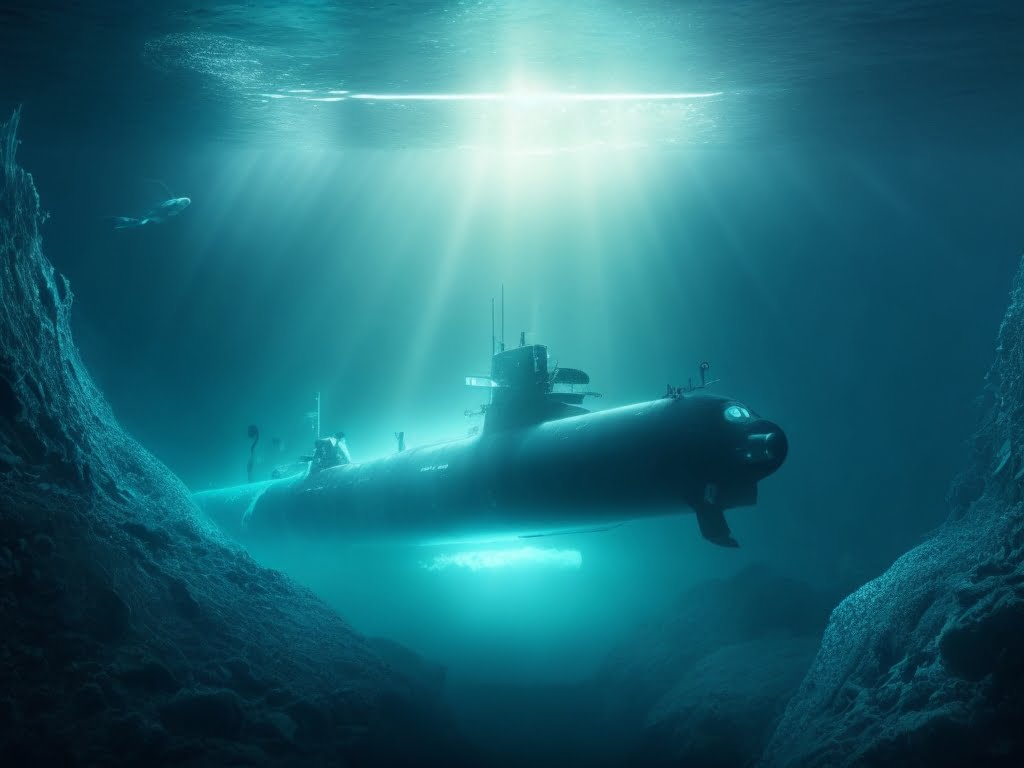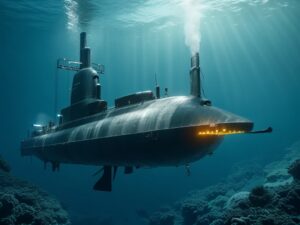What is Submarine Sonar?
Submarine Sonar in a nutshell, is a technology that allows submarines to see underwater. It is achieved by emitting sound waves and listening to their echoes. This principle is called the echolocation which is the same as the bats which locate via air. When a sound wave that is emitted by the sonar system encounters an object in the water, some of the wave bounces back as echoes. By analyzing the time taken for the echo to return and by the characteristics of echo, submarines can determine the distance, size and even the type of object that was found.
How Does Sonar Work Underwater?
Sound waves have unique properties and that properties vary depending on the environment. Unlike air, water is an excellent conductor of sound, with sound traveling at a much higher speed in water. With sound traveling in air at around 343 meters per second and sound traveling in water at 1,481 meters per second, this phenomenon becomes crucial for the effectiveness of the sonar operations. The Sonar system typically consists of transducer, which are devices that both emit and receive sound waves.
Types of Sonar Systems Used in Submarines
There are two types of Sonar Systems used in submarines: Active Sonar and Passive Sonar
Passive Sonar
Passive sonar operates by listening to the natural sounds that occur in the ocean, such as the sound generated by the ships, marine life and even other submarines. By analyzing these suns, submarines can detect and locate any other malicious submarines or targets without emitting any sound of themselves, making them less prone to detecting.
Active Sonar
Active Sonar, unlike the passive one, involves the submarine actively sending out sound waves ( known as the “Submarine Pings”) into the surrounding water. By measuring the time it takes for the pings to bounce back as echo, the submarine creates a detailed map of its underwater surroundings. Active Sonar is highly effective for target detection and tracking but it comes with the risk of revealing the submarine’s presence.
Evolution of Submarine Sonar
Historical Development
The development of submarine sonars is closely linked with the history of naval warfare. During the World War, the sonar technology was called the Anti-Submarine Detection Investigation Committee, in short as ASDIC. Which allows the submarines to hunt the enemy ships and evade detection more effectively. These advancements continued to evolve during the Cold war, as both western and Soviet wanted to gain upper hand in underwater warfare.
Milestones in Sonar Technology
The key milestone in sonar technology is the invention of the echo sounder in the early 20th century and also the development of more advanced Sonar Arrays during World War II. Modern Sonar systems have become highly advanced, with computerized signal processing and noise reduction methods and real-time data visualization tools.
Impact of Sonar on Submarine Warfare
The impact of Sonar in Submarine warfare is that it transformed underwater warfare. It has transformed a submarine from a simple vessel to travel to a potent warfare equipment. Submarines equipped with advanced Sonar systems can detect and engage enemy vessels while remaining hidden beneath the ocean.
Components of a Submarine Sonar System
Transducers
Transducers are like the heart of any sonar system. They convert the electrical signal into sound waves and vice versa. These are various types of transducers, including hydrophones ( for receiving Sounds ) and projectors ( for emitting sounds ). These transducers are strategically placed on the body of the submarine to provide high efficient coverage.
Signal Processing Units
Sonar systems typically generate large amounts of data. Signal processing units onboard the submarines collect these data and analyze them to create a coherent picture of the underwater environment. Advanced algorithms help filter out background noises and enhance the clarity of sonar images.
Display and User Interface
Operators inside the submarines interact with the sonar data through a sophisticated display and user interfaces. These interfaces provide real-time information about the submarine’s surroundings, allowing for informed decisions in navigation, thread detection and evading.

Applications of Submarine Sonar
- Navigation and Collision Avoidance: Sonar systems assists the submarines in safe underwater navigation, even in challenging conditions.
- Detection and Tracking of Threats: Sonar systems are crucial for locating enemy submarines, surface vessels and mines for both defensive and offensive purposes.
- Environmental Monitoring: Sonar helps in marine research, seafloor mapping, and studying the impact of climate change in oceans and ocean life.
- Scientific Research and Exploration: Sonar helps in exploration of deep-sea ecosystems, geological and archaeological searches.
Challenges and Limitations
- Acoustic Interference: Background noise from marine life and ships can be a problem to accurately detect targets.
- Vulnerability to Detection: Active sonar usage can use submarine pings and reveal a submarine’s presence to the enemies.
- Ethical and Environmental Concerns: Sonar’s use may impact marine life, particularly cetaceans and raise ethical and environmental concerns.
Conclusion
In conclusion, submarine sonar is a technology that enables submarines to visualize and navigate underwater, sometimes by emitting soundwaves and analyzing their echoes and other times by passively looking for sounds from objects. The advancement of sonar systems have enabled us not only in winning wars but also in understanding the ocean seafloor and navigating in sea safely



